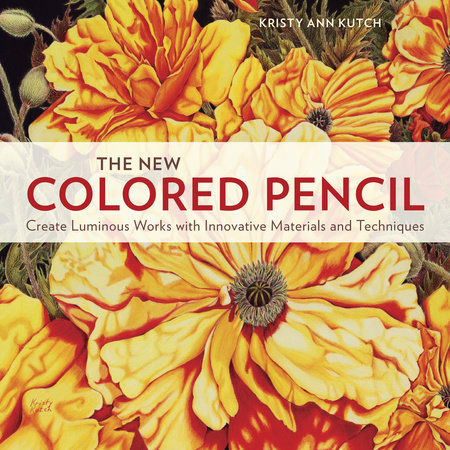Introduction
From the first time I picked up a colored pencil in my local art league class, I have been intrigued by the medium. More than two decades have passed since that course, and I have embraced the growth of colored pencil as a fine art medium with great enthusiasm. Since my first book,
Drawing and Painting with Colored Pencil, was published by Watson-Guptill in 2005, there have been many product and technique developments. With a spirit of fun and adventure, I have incorporated new pencils, wax pastels, tools, and approaches into my own art. Whether I drew, brushed, grated, spattered, or even blew pigment through a screen, it has been an enjoyable and satisfying experience. In recent years, many new varieties and types of colored pencils have emerged, each with their own merits and characteristics—and sometimes inspiring new techniques. The varieties of pencils and the palette of colors in which they’re available have grown beyond wax- or oil-based “permanent” traditional pencils. Water-soluble drawing products now include new types of watercolor pencils, including ink-like pencils and even tinted aquarelle graphite pencils. Pigments are rich and dense, and more emphasis has been placed on lightfastness for the permanence of one’s art.
The emergence of water-soluble wax pastels—which may
look like crayons but which offer much more in terms of quality, speed, and versatility—has been perhaps the most surprising development in the world of color drawing and painting. Aquarelle wax pastels swiftly cover large areas with rich pigment that dissolves instantly with the sweep of a damp brush. The wax pastel can also be sharpened to a point, or the pigment can be stroked from the tip with a wet brush. This type of aquarelle wax pastel can yield a highly pigmented liquefied wash which can then be applied with a brush.
New and diverse drawing and painting surfaces that are colored pencil–compatible have emerged, too.
Longtime favorite lines of paper have expanded to include more colors. New brands of papers have appeared with a variety of textures, to appeal to artists’ wide-ranging tastes. Versatile illustration board ideally designed and textured for wet media as well as dry is now on the market. Translucent film–like vellum, acid-free and of high quality, offers speedy, rich laydown of colors. From fine-toothed silky paper to sandy-textured boards, dazzling pure white or toned to a range of colors, such supports offer an aspiring array of textures, hues, and unique traits—the potential unfolds with great possibilities.
Colored pencil is ever-blossoming as a fine art medium, bringing with it new materials and surfaces, even an expanded concept of what “drawing a painting in color” means. This book presents many possibilities and techniques for widening those colored pencil boundaries.
Artists whose work I have admired over the years, whether they were long-recognized figures in colored pencil circles or emerging artists I met through my workshop travels, have been generous in sharing their art, describing their tools and techniques, even revealing their sources of inspiration. You will linger and marvel over their art as I, too, have done. I am most grateful for their participation and the enhancement that their art has lent to
The New Colored Pencil. My deepest gratitude goes to these very special guest artists, whose contributions so enhance these pages: Debbie Bowen, Jeannette Buckley, Karen Coleman, Barbara Grant, Mary Hobbs, Laura Miller, Jackie Treat, Ranjini Venkatachari, and Jana Westhusing.
I hope that learning about colored drawing materials and seeing the work of colored pencil artists will inspire you to consider such techniques and materials and to continue to grow creatively.
Copyright © 2014 by Kristy Ann Kutch. All rights reserved. No part of this excerpt may be reproduced or reprinted without permission in writing from the publisher.







